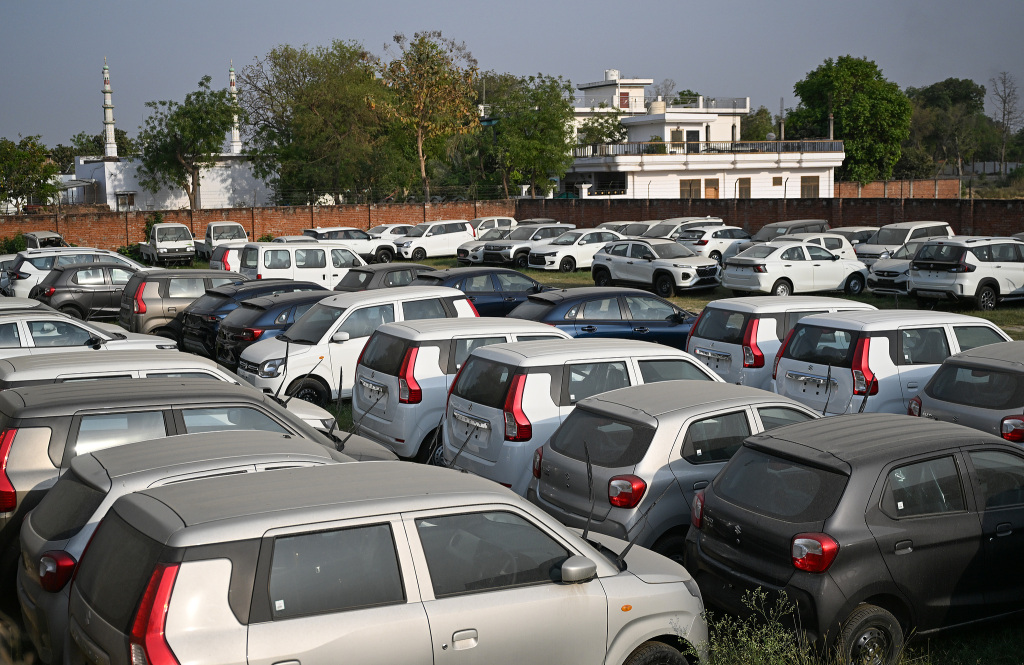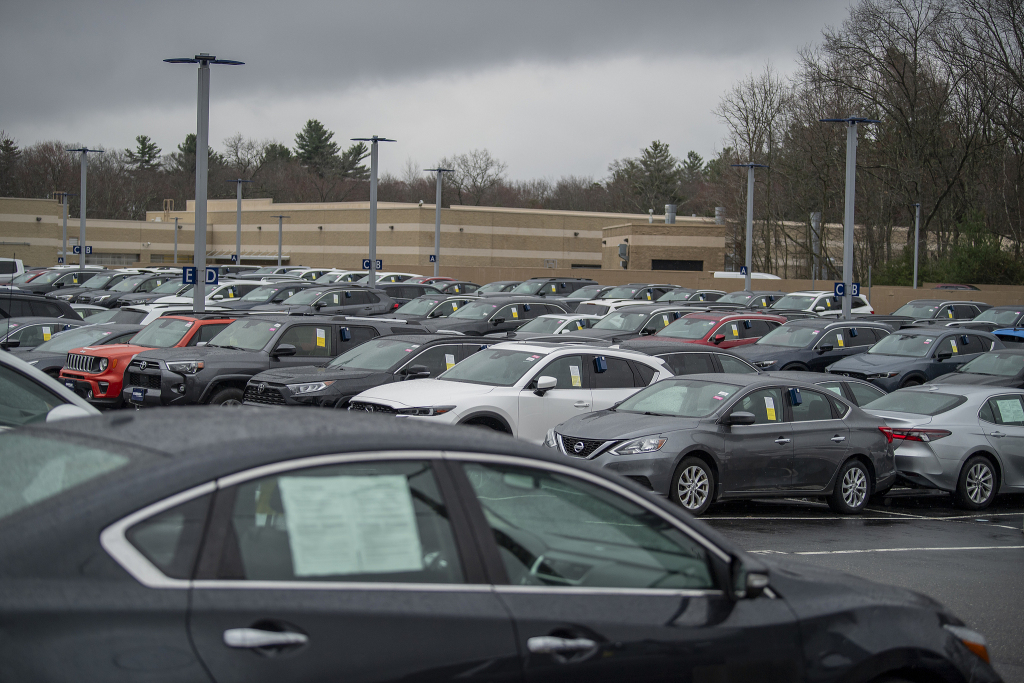
As the Trump administration demands that India remove its auto tariffs, documents are being frequently revised in a conference room in New Delhi, India.
According to foreign media reports, an internal draft obtained by the media recently shows that India's automobile tariff concessions to the European Union may be far greater than expected - from the current maximum of 100% to 10% in stages.
The current annual sales volume of the Indian automobile market is about 4 million vehicles, but it is one of the markets with the highest tariff barriers in the world.

New cars in a parking lot in Allahabad, India, April 3, 2025, local time.
The 25% auto tariff policy that took effect in the United States in April included 130 parts in the tariff list. Documents submitted by Tesla show that the door modules produced by its Berlin factory will also face additional tariffs, which explains why the company suddenly accelerated its access negotiations with the Indian government. The EU's move to seek India to lower tariffs will open up market space for European automakers such as Volkswagen, Mercedes-Benz and BMW, and Tesla's electric vehicles produced at the Berlin factory are also expected to accelerate their entry into the Indian market.
Faced with dual pressures from the United States and Europe, India has shown rare flexibility. Internal documents show that if the EU tariff plan is implemented immediately, the share of Indian local brands in the high-end car market may drop from 72% in 2023 to 58% in 2027. However, customs data show that the import volume of Mercedes-Benz EQE without battery packs surged 340% in the first five months of this year. These semi-finished products can still be marked as "Made in India" after the final assembly at the Pune plant.
Although Indian automakers such as Tata and Mahindra strongly oppose lowering tariffs on European and American imported cars, the penetration rate of electric vehicles in India is only 2.5%, far below the policy target of 30% by 2030. In order to attract foreign investment such as Tesla, India has planned to take the lead in reducing tariffs on electric vehicles in the India-US trade agreement.
In a recent speech by the Indian Minister of Commerce, the words "For the World" were added next to the slogan "Make in India", suggesting a deeper strategic shift. Analysts pointed out that when the United States and Europe built a high tariff wall, India is using its market size of 4 million vehicles per year to attract European production capacity transfer and act as a safe haven.


